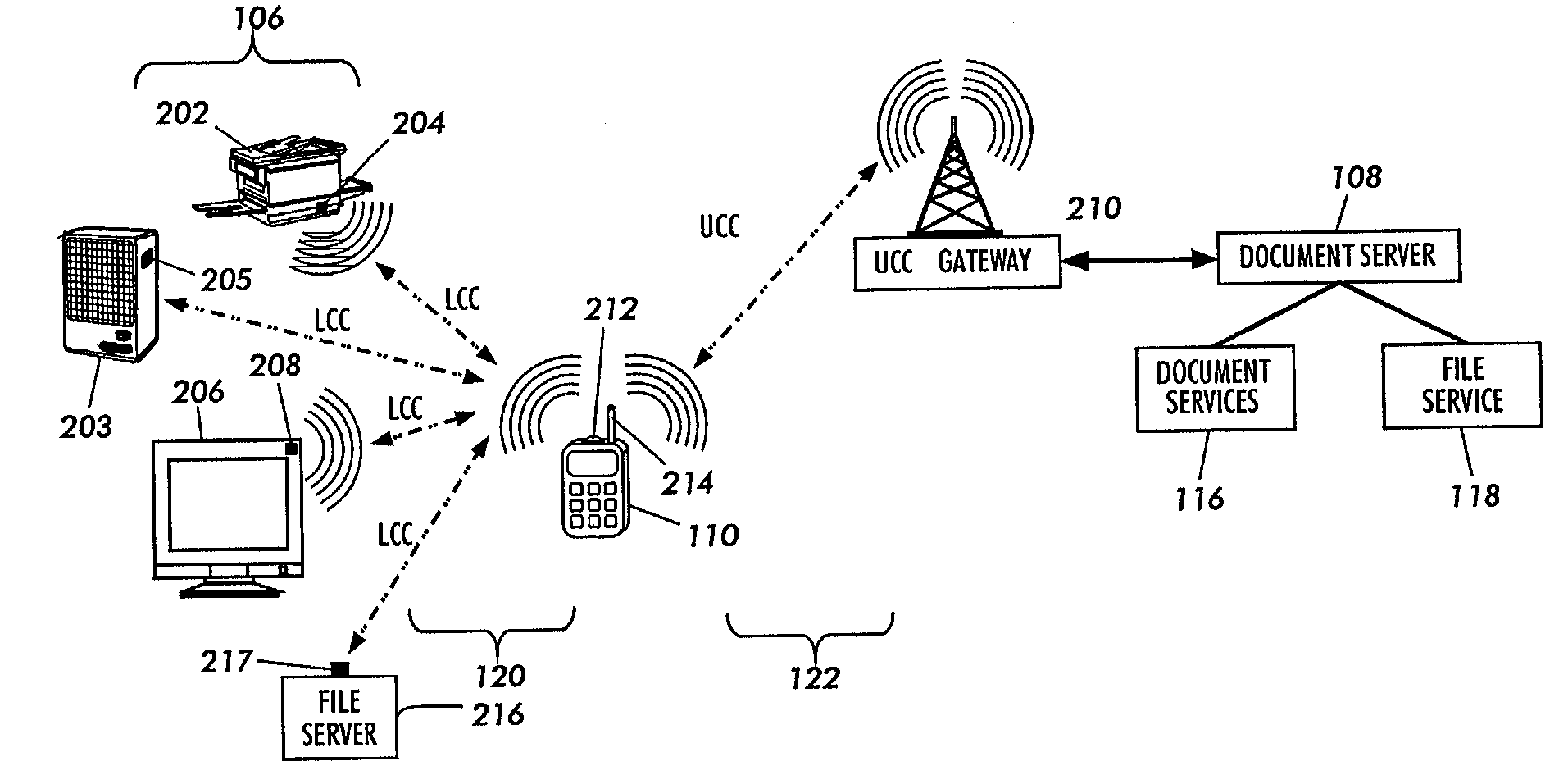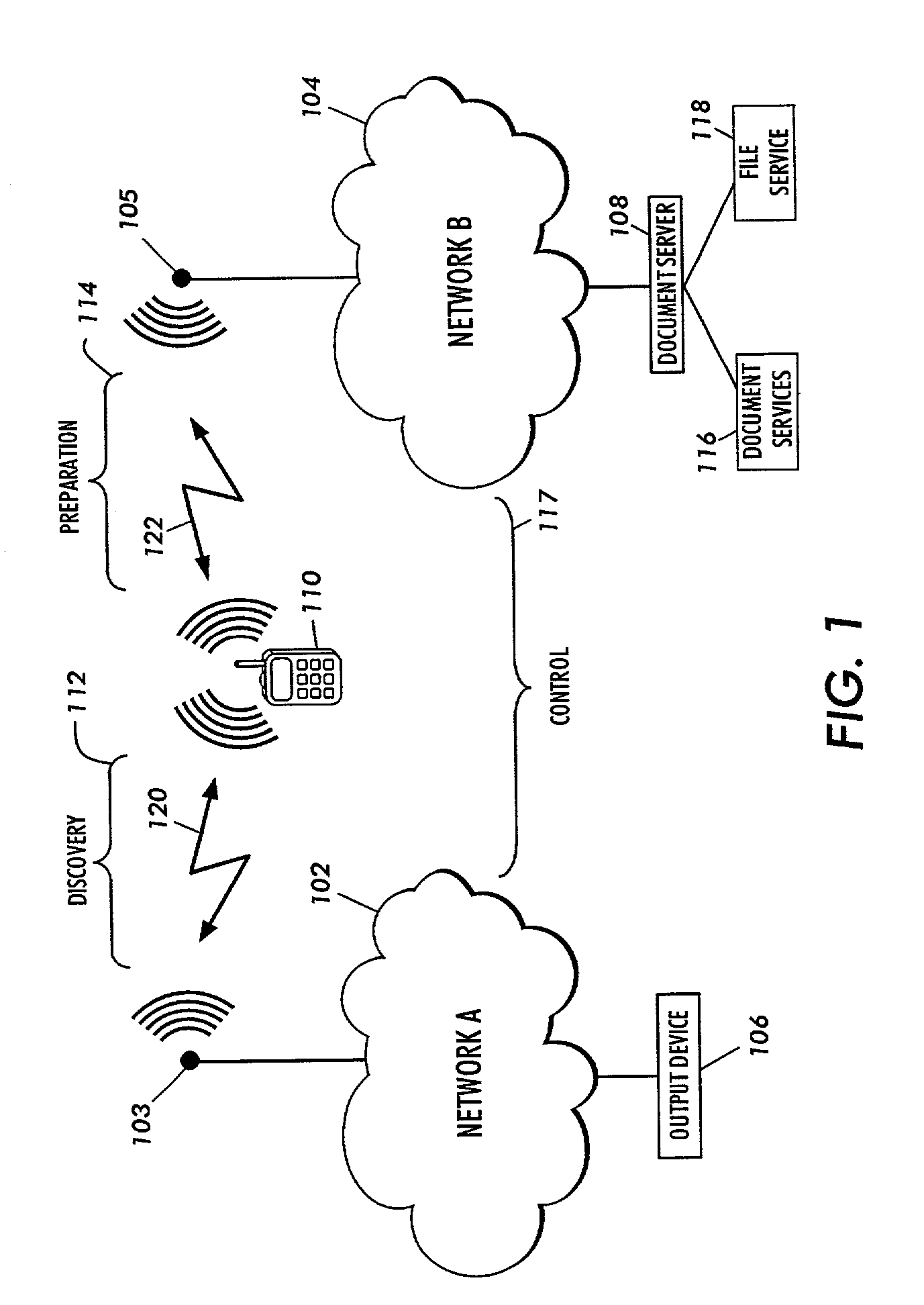Method and apparatus for controlling document service requests using a mobile computing device
- Summary
- Abstract
- Description
- Claims
- Application Information
AI Technical Summary
Problems solved by technology
Method used
Image
Examples
Embodiment Construction
[0037]A. General Operating Environment
[0038]FIG. 1 illustrates the general operating environment of the invention in which a first network 102 (“Network A”) has no adequate preexisting connectivity to a second network 104 (“Network B”). A network is defined herein as a collection of one or more computational devices that is adapted to communicate with each other. The network may be wired or wireless, wide (WAN) or local (LAN). Wired and wireless networks can for example communicate using protocols such as Ethernet and ATM (Asynchronous Transfer Mode). A wireless network can for example operate in a wireless field using the IEEE 802.11 standard. In addition, a network can be an ad-hoc network that can be formed by stand-alone devices coupled to wireless transceivers.
[0039]Wireless ad-hoc networks generally have no centralized control that requires devices to be pre-registered thereto so that they may operate thereon. Instead, wireless ad-hoc networks are formed on demand by the devic...
PUM
 Login to view more
Login to view more Abstract
Description
Claims
Application Information
 Login to view more
Login to view more - R&D Engineer
- R&D Manager
- IP Professional
- Industry Leading Data Capabilities
- Powerful AI technology
- Patent DNA Extraction
Browse by: Latest US Patents, China's latest patents, Technical Efficacy Thesaurus, Application Domain, Technology Topic.
© 2024 PatSnap. All rights reserved.Legal|Privacy policy|Modern Slavery Act Transparency Statement|Sitemap



